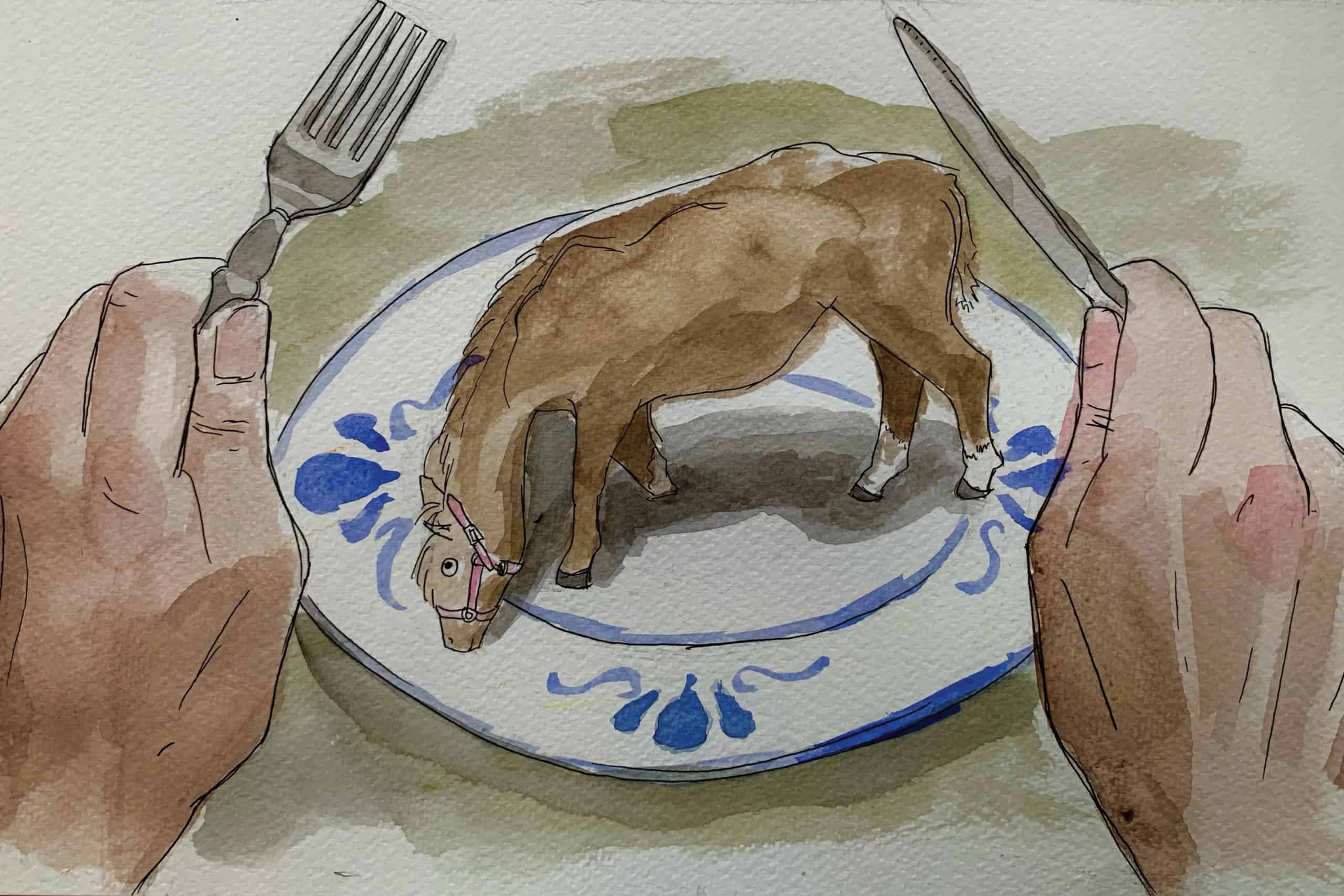Between the ages of seven and 10, my mind was home to one subject: My Little Pony.
For those unfamiliar, I’m not referring to an actual pony — rather, I’m talking about my collection of vibrantly coloured miniature toy horses, each with a unique symbol on their flank. My personal favourite was Rainbow Dash, a light blue pegasus with a rainbow mane and fluffy wings.
About 30,000 years ago, on the walls of France’s Lascaux caves, an unknown artist painted a more realistic interpretation of Rainbow Dash: a chubby horse with a tan body, a black mane, and slender legs. When researchers looked at the artwork further, they were able to identify these horses as chauvet horses, a subspecies which was once a food source for humans.
So how did our species go from eating horses to playing with small, neon-coloured versions of them?
What’s a wild horse?
The answer lies in domestication. While the origins of horse domestication couldn’t be traced back to the Lascaux caves, the wild horses depicted there suggest that all potential wild ancestors of modern horses have gone extinct.
Almost all the non-domesticated horses living today are descended from populations of Equus ferus caballus — a subspecies of domesticated horses — that were released or escaped from human watch. These horses are referred to as ‘feral’ horses to differentiate them from the lineages of horses that were never domesticated.
The only horses still living today that are potentially truly ‘wild’ are members of the endangered subspecies of Przewalski horses. These horses resemble the Lascaux cave’s depictions of horses much more than Rainbow Dash does. Instead of wings and light blue hair, they have short, stocky necks and rigid black manes. Today, only around 1,200 of these horses exist, living in Europe and Asia.
The Botai settlement
For years, it was thought that the origins of horse domestication could trace back to a single 5,500 years old settlement in Kazakhstan called Botai. In 1993, archaeologists identified a large number of horse remains around the region. In 2009, they discovered pottery that contained chemical residues from horse meat, and found horse teeth with wear patterns which suggested that the horses were bridled and ridden by humans.
However, the connection between the Botai settlement and modern horses was challenged in 2018 when a group of geneticists further studied the remains. They concluded that the Botai horses shared little to no genetic connection with modern horses.
This discovery was further proven in 2021 when researchers re-evaluated the Botai horses’ teeth and argued that their wear patterns could have happened naturally. They compared the patterns on the teeth to similar patterns on the teeth of ancient wild horses that had never been in contact with humans. This new group of researchers proposed that the people in Botai hadn’t domesticated horses, but they were instead harvesting them from the wild for food.
Russia: Horses’ homeland?
In 2021, a paper was published by a team of over 160 researchers who sequenced the genomes of 273 ancient horses from Eurasia covering the last 50,000 years. These researchers found that, until 4,000 years ago, Eurasia was home to a diverse community of wild horses.
While, at first, the horses came from a lot of genetically distinct lineages across the region, it wasn’t long before one lineage began to spread rapidly. Researchers thought that this shift marked the rise of the domestic lineage that all modern horses descend from. They were able to pinpoint the origin of this lineage to the land that’s now Russia.
Around Russia’s Volga and Don rivers, people began domesticating and breeding horses in large numbers. These breeders changed the function of the horses’ GSDMC gene — a protein involved in making the horses’ spines stronger — making them ideal for carrying the weight of people, chariots, and goods.
Another gene that was affected by early selective breeding was ZFPM1, which alters horses’ brain chemistry, making them less anxious so they’re easier to breed. It was only 3,500 years ago that these modern, domestic horses spread and replaced other wild populations.
Today, horses are found in vastly different shapes and sizes. From the horses who once pulled chariots in Russia to the ponies we visit at petting zoos, human history would be unrecognizable without them. Though much of horses’ function has changed throughout history, one thing stays constant: we still find horses to be as beautiful as the artists in the Lascaux caves did 30,000 years ago. If you have any doubt, just ask to see the wooden chest of currently unused My Little Ponies sitting in my basement.


